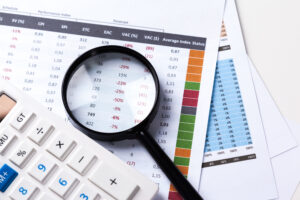

Are you in search of a reliable and efficient way to manage your financial data? Look no further! In this article, we’re diving deep into the world of balance sheets and how a free balance sheet template for Google Sheets, Excel, or PDF can revolutionize your financial tracking process. Whether you’re a small business owner, an individual managing personal finances, or simply curious about financial statements, this guide will provide you with all the essential information you need.

A balance sheet is a crucial financial statement that provides a snapshot of an entity’s financial position at a specific point in time. It consists of three major components: assets, liabilities, and equity. These components showcase how assets are funded through either liabilities or equity. Essentially, a balance sheet illustrates the accounting equation:
Assets = Liabilities + Equity.

When it comes to managing your financial data, using a balance sheet template can be a game-changer. There are several types of balance sheet templates available, each designed to cater to different needs:
A simple balance sheet template is perfect for individuals or small businesses looking for a straightforward way to track their financial standing. This template typically includes sections for assets, liabilities, and equity, making it easy to input and analyse your financial data.
For more comprehensive financial analysis, a detailed balance sheet template is a great choice. This template provides additional sections that break down assets and liabilities into further categories, allowing for a more in-depth understanding of your financial position.
The format of a balance sheet template usually consists of rows and columns that organize financial data. Assets are listed on the left side, while liabilities and equity are listed on the right side. This format ensures that the accounting equation remains balanced.
Understanding the balance sheet equation is essential for interpreting this financial statement. The equation, Assets = Liabilities + Equity, showcases the relationship between the various components. Assets represent what an entity owns, liabilities represent what it owes, and equity represents the residual interest of the owners.

Assets are the resources owned by an entity that have future economic value. They can be categorised into two main types:
Current assets are those that are expected to be converted into cash or used up within a year. Examples include cash, accounts receivable, and inventory.
Non-current assets, also known as long-term assets, have a longer lifespan and are not expected to be converted into cash within a year. Examples include property, equipment, and investments.
Liabilities are the obligations an entity owes to external parties. Like assets, liabilities are also divided into two main types:
Current liabilities are obligations that need to be settled within a year. Examples include accounts payable, short-term loans, and accrued expenses.
Non-current liabilities, or long-term liabilities, are obligations that extend beyond a year. Examples include long-term loans and bonds payable.
“Equity” on a balance sheet is a vital concept in the world of finance. Also known as “net assets” or “shareholders’ equity,” it holds significant importance in understanding the financial standing of a company.
When a company prepares a balance sheet, it categorises its resources and obligations. Equity, in this context, represents the residual interest left after deducting the company’s liabilities from its total assets. In simpler terms, it’s what remains for the owners (or shareholders) of the company if all its debts are settled.
“Shareholder’s or Owner’s Equity” is a specific subset of equity that focuses on the owners or shareholders of the company. It provides deeper insight into their financial involvement.
“Shareholder’s or Owner’s Equity” encompasses the financial contributions made by the owners or shareholders to the company and the earnings the company has retained over time. This subset of equity demonstrates how much of the company’s value is attributed to the direct involvement of its owners.

Utilizing a balance sheet template offers numerous benefits, including:
A balance sheet provides a snapshot of a company’s financial position, showing its assets, liabilities, and equity at a specific moment. It helps assess financial health and liquidity.
While a balance sheet provides a static snapshot of financial position, an income statement focuses on performance over a period. The income statement showcases revenues, expenses, and net income.
The frequency at which a balance sheet is prepared is a crucial aspect of financial reporting for any business entity. It plays a vital role in providing stakeholders with an up-to-date snapshot of the company’s financial position. Let’s dive into the details of how often a balance sheet is prepared and the reasons behind different reporting timelines.
Balance sheets are typically prepared at the end of specific accounting periods. The frequency of preparation depends on various factors, including the nature of the business, legal requirements, industry standards, and the reporting needs of the company.
EcomBalance is a monthly bookkeeping service specialised for eCommerce companies selling on Amazon, Shopify, Ebay, Etsy, WooCommerce, & other eCommerce channels.
We take monthly bookkeeping off your plate and deliver you your financial statements by the 15th or 20th of each month.
You’ll have your Profit and Loss Statement, Balance Sheet, and Cash Flow Statement ready for analysis each month so you and your business partners can make better business decisions.
Interested in learning more? Schedule a call with our CEO, Nathan Hirsch.
And here’s some free resources:
Incorporating a free balance sheet template for Google Sheets, Excel, or PDF into your financial management tool kit can significantly simplify your tracking and analysis processes. Whether you’re an individual, a small business, or a seasoned financial professional, understanding the components and benefits of a balance sheet template empowers you to make informed decisions and manage your financial resources effectively.